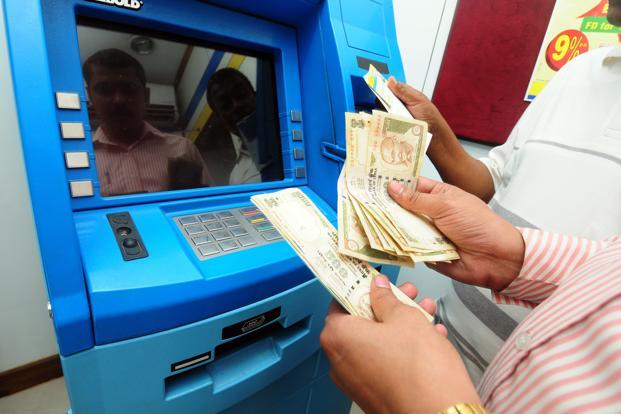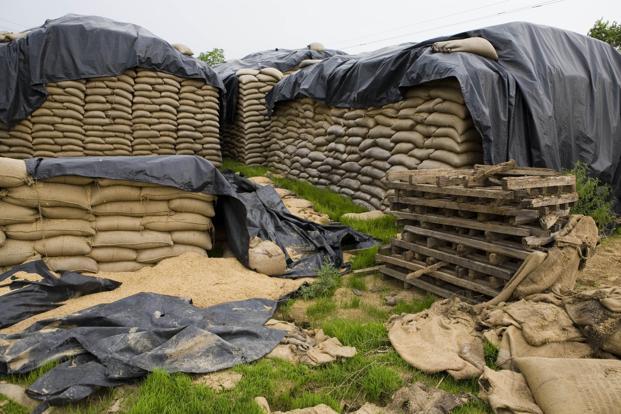For two consecutive days last week, the Indian currency rose, to close at 65.71 a dollar on Friday. This is a pretty happy situation, considering the fact that on Wednesday, panic-selling caused the biggest single-day decline in the value of the rupee in 20 years en route to another historic low.
A combination of domestic macroeconomic woes, escalating tension in West Asia and rising crude oil prices pushed the currency to 68.85 to a dollar before it ended at a lifetime closing low of 68.83 on Wednesday. Its 3.83% decline, in percentage terms, was its biggest fall in more than two decades, and in absolute terms, the Rs.2.64 drop, is the steepest since July 1991. At Wednesday’s level, the rupee’s decline against the dollar since January was 20%. After two days’ gain, this has shrunk to 16.3%, still the most among Asian currencies.
Even then, it’s too early to say that the Indian currency has seen its worst and it will not drop further, even though, going by the so-called real effective exchange rate, the rupee is sharply undervalued. The last two days’ rise could simply be out of fatigue of running too fast.
After the Reserve Bank of India (RBI) announced a special dollar window for oil retailers, one of the few sensible decisions that the central bank has taken in its recent fight against currency deprecation, offshore non-deliverable forward (NDF) contracts have started easing. RBI has opened a foreign exchange swap window to meet the daily dollar requirements of state-run oil marketing companies (OMCs). In the past, too, RBI met the dollar requirement of OMCs directly, but unlike on previous occasions, this time it is a swap window. This means RBI is selling dollars for a fixed tenure—probably three months—with an understanding that OMCs will return the dollars on expiry of contracts. Of course, depending on the market situation, such contracts can be rolled over.
RBI will have to give OMCs $1.75 billion a week as their daily dollar demand is around $350 million (the foreign exchange market operates five days a week). The arrangement will initially run for about five weeks, and depending on its success, it can be extended further. So, by offering a direct dollar line to OMCs, RBI is taking away $8.75 billion worth of demand from the market—and this will definitely help stabilizing the currency. Brazil has extended a similar dollar line to meet all corporate demand for dollars, but it may not be possible in India to replicate that.
The swap window for OMCs is not the last tool that is being used to rein in the runaway depreciation of the rupee. There are quite a few options still left before RBI as well as the government. For instance, RBI can consider intervening in the NDF market through foreign banks. South Korea had done this in the past and the Philippines, too, tried this out in a very limited way.
Before shifting its attention to the NDF market, RBI can also take a close look at the traders at domestic currency exchanges. The banking regulator has been discussing this with the Securities and Exchange Board of India (Sebi) that regulates such exchanges. After making it mandatory that all trades must be delivery-based, the trading volumes on these exchanges have come down.
There have been demands from various quarters for a back-stop facility from the International Monetary Fund (IMF), but neither the government nor RBI seems to be too excited about the idea. India’s current foreign exchange reserves (little more than $250 billion) are not too small a pile, and this may come in the way of getting any special dollar line from IMF. Besides, India has extended $10 billion to IMF and talks for another line of $10 billion have been on.
RBI has, however, a swap facility with the Bank of Japan. It can draw 20% of that—
$3 billion out of a $15 billion facility—any time it wants and for the rest it needs to fulfil certain formalities.
To augment the dollar flow into India, RBI can also lift the cap on banks’ overseas borrowing. Currently, Indian banks can borrow any amount overseas for on-lending to exporters who earn dollars, but for giving loans to corporations with no dollar earnings, banks’ overseas borrowing is capped at 50% of their net-owned funds, or equity and reserves. RBI can allow banks to borrow up to 100% of their net-owned funds with certain caveats.
If this is one way of augmenting the dollar flow, the demand for the greenback could be contained if we are able to conduct bilateral trades with some countries in local currencies. Such an arrangement now exists with Iran. The invoices will be in rupee, and if our exports are less than imports from a particular country with which such an arrangement is forged, only the excess amount can be settled in dollar. The commerce ministry is seriously exploring this with a few countries.
Finally, floatation of a quasi-sovereign bond can always be explored. The finance ministry has already announced overseas borrowing by a few public sector undertakings, but I am told they are inhibited because of the very high hedging cost. They will firm up plans for tapping the overseas market only if RBI or the government is willing to share the hedging cost, which is currently around 9%. A similar arrangement was put in place when State Bank of India tapped non-resident Indians for India Millennium Deposits in 2001. The bank bore the burden of up to 1% of rupee depreciation while the government took care of the rest.



